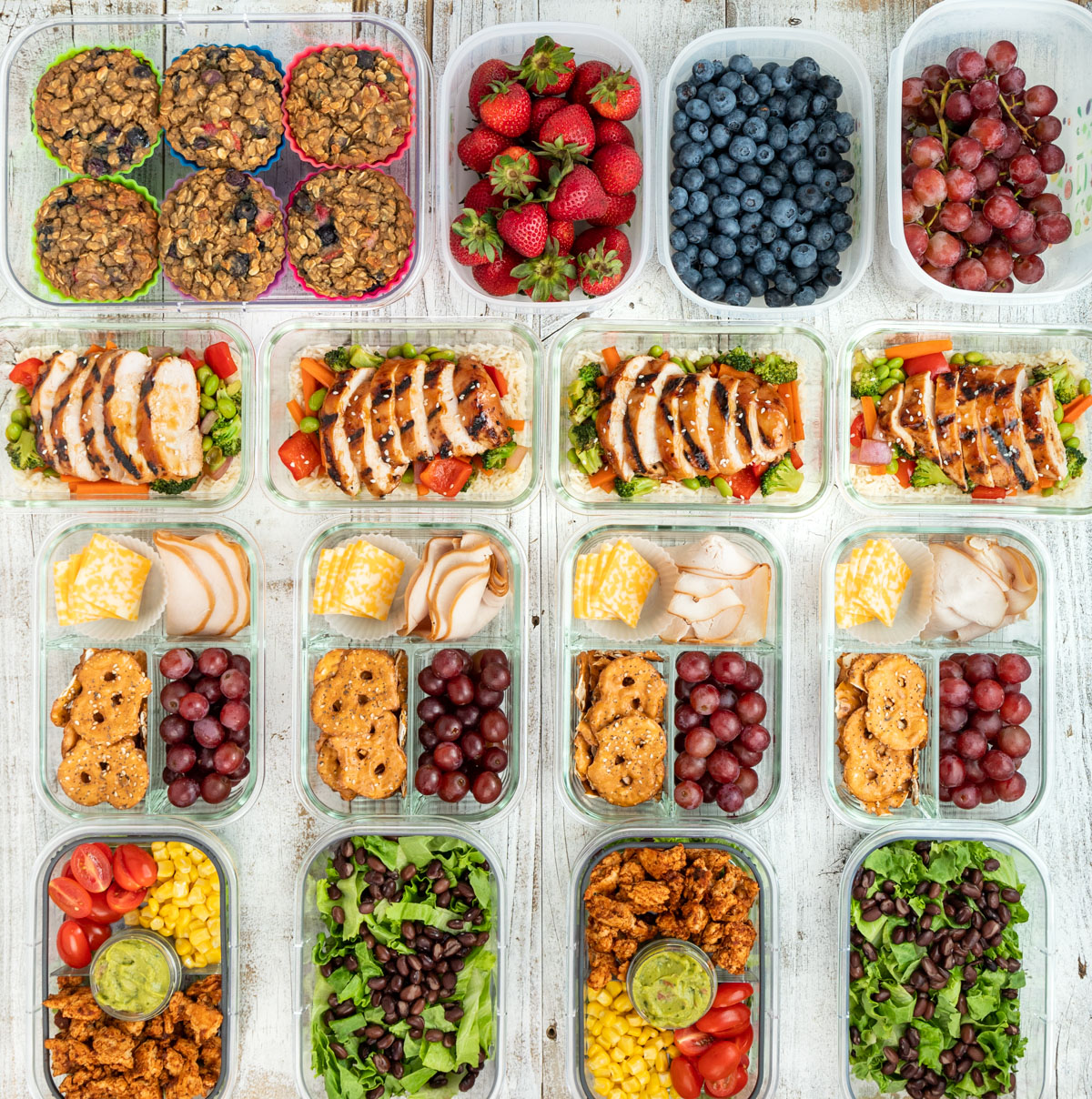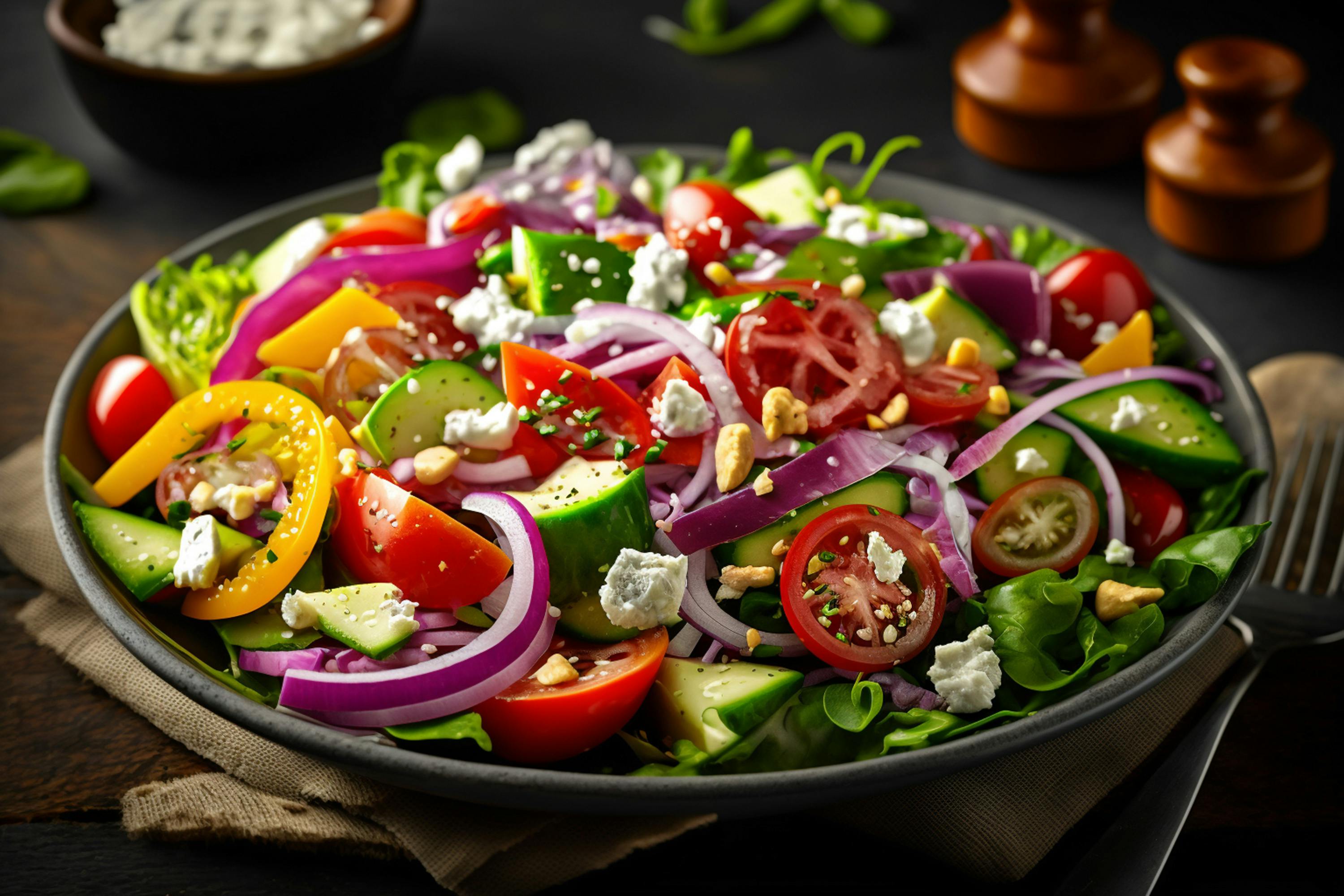In today’s fast-paced world, it can be challenging to maintain a healthy and balanced diet. With busy schedules and endless temptations, it’s easy to fall into the trap of convenience foods and unhealthy eating habits. However, with a little planning and preparation, it is possible to create a nutrient-rich meal plan for the week that will not only nourish your body but also save you time and money.
Creating a weekly meal plan may seem daunting at first, but it is a simple and effective way to ensure that you are getting all the necessary nutrients your body needs. By following a well-rounded meal plan, you can improve your overall health, boost your energy levels, and even manage your weight. In this blog post, we will discuss the key components of a healthy 7-day meal plan and provide tips on how to create one that works for you.
Creating a Nutrient-Rich Weekly Meal Plan

Before diving into the specifics of a 7-day meal plan, it’s essential to understand the importance of a nutrient-rich diet. Our bodies require a variety of vitamins, minerals, and macronutrients to function correctly. These nutrients play a crucial role in maintaining our immune system, supporting organ function, and providing us with energy. Therefore, it’s vital to include a variety of whole foods in our diet to ensure we are getting all the necessary nutrients.
When creating a weekly meal plan, it’s essential to consider the three main macronutrients: carbohydrates, protein, and fat. Carbohydrates are our body’s primary source of energy, and they should make up about 45-65% of our daily calorie intake. Protein is essential for building and repairing tissues and should make up about 10-35% of our daily calorie intake. Lastly, fat is necessary for hormone production, insulation, and protecting our organs, and it should make up about 20-35% of our daily calorie intake.
The Importance of Meal Planning
Meal planning is a crucial aspect of maintaining a healthy diet. It involves creating a detailed plan for your meals and snacks for the week ahead. By doing so, you can ensure that you are consuming a balanced and nutrient-rich diet. Here are some benefits of meal planning:
- Saves time: By planning your meals in advance, you can save time on grocery shopping and meal preparation throughout the week.
- Reduces food waste: When you have a meal plan in place, you are less likely to buy unnecessary items at the grocery store, reducing food waste.
- Saves money: Meal planning allows you to buy ingredients in bulk and use them in multiple meals, saving you money in the long run.
- Promotes healthier choices: When you have a meal plan in place, you are less likely to reach for unhealthy convenience foods and more likely to stick to your planned meals.
- Helps with weight management: By planning your meals, you can control portion sizes and ensure that you are getting all the necessary nutrients, making it easier to manage your weight.
Tips for Creating a Weekly Meal Plan
Now that we understand the importance of meal planning let’s discuss some tips for creating a weekly meal plan that works for you.
- Start with your schedule: Before planning your meals, take a look at your schedule for the week. Consider any events or commitments that may affect your meal times or availability to cook.
- Choose a day for meal prep: To save time during the week, choose a day to do your meal prep. This could involve chopping vegetables, cooking grains, or marinating proteins. Having these tasks done in advance will make it easier to put together meals during the week.
- Keep it simple: Don’t feel like you need to create elaborate meals every day. Stick to simple recipes that use similar ingredients to save time and money.
- Incorporate variety: Eating the same meals every day can get boring quickly. Make sure to include a variety of foods in your meal plan to keep things interesting and ensure you are getting all the necessary nutrients.
- Use seasonal produce: Not only is seasonal produce more affordable, but it also tastes better and is more nutritious. Plan your meals around what’s in season to get the most out of your ingredients.
- Don’t forget snacks: Snacks are an essential part of a healthy diet, so make sure to plan for them as well. Choose nutrient-dense snacks such as fruits, nuts, or hummus and veggies to keep you satisfied between meals.
- Be flexible: It’s okay if you don’t stick to your meal plan 100%. Life happens, and sometimes things come up that may throw off your schedule. Be flexible and make adjustments as needed.
The Key to a Balanced Diet: A Comprehensive 7-Day Meal Plan

Now that we have covered the basics of meal planning let’s dive into a comprehensive 7-day meal plan that will provide you with optimal nutrition.
Day 1: Monday
| Meal | Recipe |
|---|---|
| Breakfast | Avocado Toast with Poached Eggs |
| Lunch | Quinoa and Black Bean Salad |
| Dinner | Baked Salmon with Roasted Vegetables |
Breakfast: Start your week off with a protein-packed breakfast by making avocado toast with poached eggs. Simply toast whole-grain bread, top it with mashed avocado, and add a poached egg on top. Sprinkle with some salt, pepper, and red pepper flakes for added flavor.
Lunch: For a satisfying and nutrient-dense lunch, try this quinoa and black bean salad. Cook quinoa according to package instructions and mix it with black beans, diced bell peppers, cherry tomatoes, and a simple vinaigrette dressing.
Dinner: For dinner, bake some salmon in the oven and serve it with a side of roasted vegetables. You can use any vegetables you have on hand, such as broccoli, carrots, and bell peppers. Drizzle with olive oil, sprinkle with salt and pepper, and roast in the oven at 400 degrees for 20-25 minutes.
Day 2: Tuesday
| Meal | Recipe |
|---|---|
| Breakfast | Overnight Oats with Berries |
| Lunch | Turkey and Veggie Wrap |
| Dinner | Lentil Curry with Brown Rice |
Breakfast: Overnight oats are a quick and easy breakfast option that you can prepare the night before. In a jar, mix together rolled oats, almond milk, chia seeds, and your choice of sweetener. Top with fresh berries in the morning for a delicious and nutritious breakfast.
Lunch: For a satisfying lunch, make a turkey and veggie wrap using whole-grain tortillas. Fill the wrap with sliced turkey, hummus, and your choice of veggies, such as lettuce, cucumber, and bell peppers.
Dinner: For a plant-based dinner option, try this lentil curry served over brown rice. Cook lentils according to package instructions and mix them with a homemade curry sauce made with coconut milk, spices, and vegetables of your choice.
Day 3: Wednesday
| Meal | Recipe |
|---|---|
| Breakfast | Greek Yogurt Parfait |
| Lunch | Quinoa Stuffed Bell Peppers |
| Dinner | Grilled Chicken with Sweet Potato Fries |
Breakfast: For a protein-packed breakfast, make a Greek yogurt parfait by layering Greek yogurt, granola, and fresh fruit in a jar or bowl.
Lunch: Quinoa stuffed bell peppers make for a delicious and nutritious lunch option. Cook quinoa according to package instructions and mix it with black beans, corn, diced tomatoes, and spices. Stuff the mixture into bell peppers and bake in the oven at 375 degrees for 25-30 minutes.
Dinner: For a simple and satisfying dinner, grill some chicken and serve it with a side of sweet potato fries. Cut sweet potatoes into wedges, toss them in olive oil and spices, and bake in the oven at 400 degrees for 20-25 minutes.
Day 4: Thursday
| Meal | Recipe |
|---|---|
| Breakfast | Veggie Omelette |
| Lunch | Chickpea Salad Sandwich |
| Dinner | Baked Cod with Quinoa Pilaf |
Breakfast: Start your day off with a veggie omelette filled with your choice of vegetables, such as spinach, mushrooms, and bell peppers. Serve with whole-grain toast for added fiber.
Lunch: For a plant-based lunch option, make a chickpea salad sandwich by mashing chickpeas with avocado, lemon juice, and spices. Serve on whole-grain bread with lettuce and tomato.
Dinner: For a seafood dinner, bake some cod in the oven and serve it with a side of quinoa pilaf. Cook quinoa according to package instructions and mix it with sautéed vegetables, such as onions, garlic, and bell peppers.
Day 5: Friday
| Meal | Recipe |
|---|---|
| Breakfast | Green Smoothie Bowl |
| Lunch | Turkey and Avocado Wrap |
| Dinner | Vegetarian Chili |
Breakfast: For a refreshing and nutrient-dense breakfast, make a green smoothie bowl by blending together spinach, banana, almond milk, and your choice of protein powder. Top with fresh fruit, nuts, and seeds for added nutrients.
Lunch: For a quick and easy lunch, make a turkey and avocado wrap using whole-grain tortillas. Fill the wrap with sliced turkey, mashed avocado, and your choice of veggies.
Dinner: For a hearty and comforting dinner, make a vegetarian chili using beans, vegetables, and spices. Serve with a side of brown rice for added fiber.
Day 6: Saturday
| Meal | Recipe |
|---|---|
| Breakfast | Whole-Grain Pancakes with Berries |
| Lunch | Tuna Salad Sandwich |
| Dinner | Grilled Shrimp with Quinoa Salad |
Breakfast: Start your weekend off with a delicious breakfast of whole-grain pancakes topped with fresh berries. You can use a mix or make them from scratch using whole-wheat flour, eggs, and milk.
Lunch: For a protein-packed lunch, make a tuna salad sandwich using canned tuna, Greek yogurt, and diced vegetables. Serve on whole-grain bread with lettuce and tomato.
Dinner: For a light and refreshing dinner, grill some shrimp and serve it with a quinoa salad. Cook quinoa according to package instructions and mix it with diced vegetables, such as cucumbers, tomatoes, and bell peppers.
Day 7: Sunday
| Meal | Recipe |
|---|---|
| Breakfast | Veggie Frittata |
| Lunch | Chicken Caesar Salad |
| Dinner | Baked Tofu with Roasted Vegetables |
Breakfast: End your week with a veggie frittata made with eggs, vegetables, and cheese. Bake in the oven at 375 degrees for 20-25 minutes until set.
Lunch: For a classic lunch option, make a chicken Caesar salad using grilled chicken, romaine lettuce, croutons, and Caesar dressing.
Dinner: For a plant-based dinner, bake some tofu in the oven and serve it with a side of roasted vegetables. You can use any vegetables you have on hand, such as broccoli, carrots, and bell peppers. Drizzle with olive oil, sprinkle with salt and pepper, and roast in the oven at 400 degrees for 20-25 minutes.
Conclusion

In conclusion, creating a healthy 7-day meal plan is an effective way to ensure that you are getting all the necessary nutrients your body needs. By incorporating a variety of whole foods and following a balanced macronutrient ratio, you can improve your overall health and well-being. Remember to keep things simple, be flexible, and listen to your body’s needs when creating your weekly meal plan. With a little planning and preparation, you can achieve optimal nutrition and maintain a healthy lifestyle.


